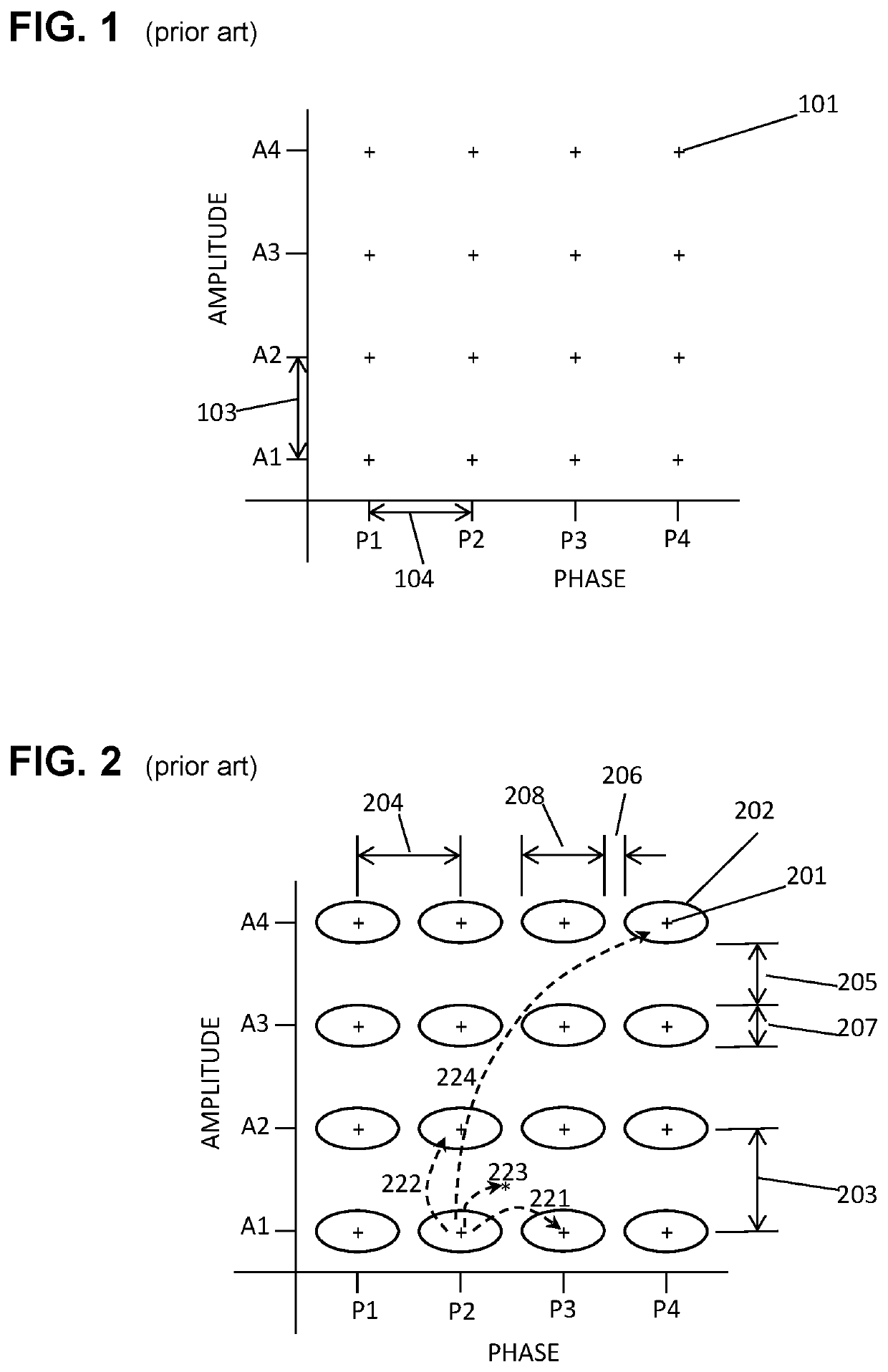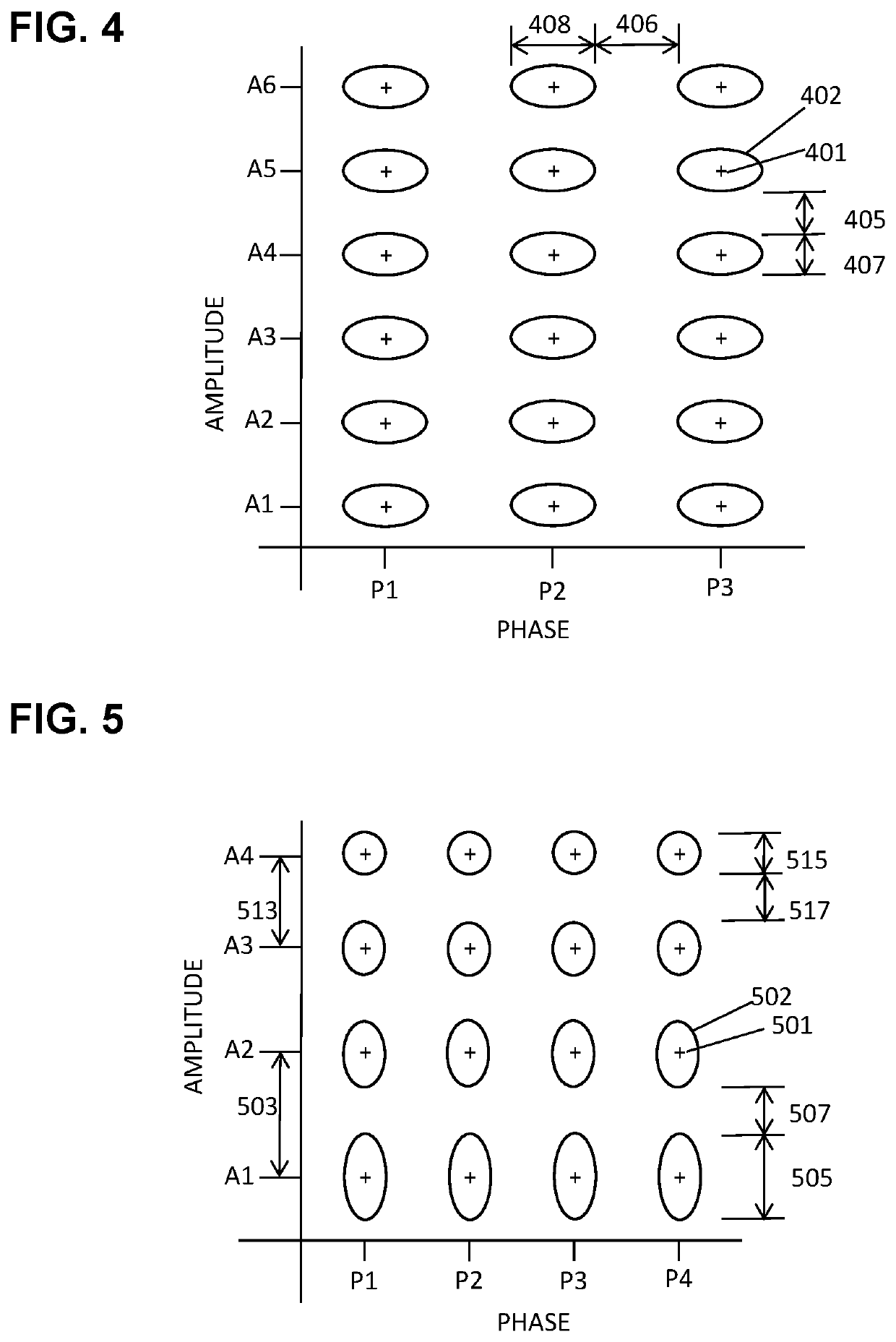Selecting a Modulation Table to Mitigate 5G Message Faults
a modulation table and message technology, applied in the field of wireless message transmission systems and methods, can solve the problems of limiting the reliability of messaging, noise and/or interference, and always present noise and interference, and achieve the effect of reducing the number of messages
- Summary
- Abstract
- Description
- Claims
- Application Information
AI Technical Summary
Benefits of technology
Problems solved by technology
Method used
Image
Examples
Embodiment Construction
[0041]Systems and methods are disclosed herein (the “systems” and “methods”, also occasionally termed “embodiments” or “arrangements”, generally according to present principles) that can provide urgently needed protocols to mitigate noise and interference in 5G wireless networking by providing modulation options, particularly amplitude and phase modulation tables, beyond those currently available. The systems and methods also include means, including AI (artificial intelligence) means, for predicting network performance according to the modulation scheme in use, for selecting a modulation scheme according to message faults observed, and for optimizing the performance of particular modulation schemes, based on message failure modes.
[0042]Widely used modulation options in 5G include 16QAM, 64QAM, 256QAM, and 1024QAM wherein the indicated number is the number of distinct modulation states in a modulation table, and QAM stands for quadrature amplitude modulation (that is, modulation of ...
PUM
 Login to View More
Login to View More Abstract
Description
Claims
Application Information
 Login to View More
Login to View More - R&D
- Intellectual Property
- Life Sciences
- Materials
- Tech Scout
- Unparalleled Data Quality
- Higher Quality Content
- 60% Fewer Hallucinations
Browse by: Latest US Patents, China's latest patents, Technical Efficacy Thesaurus, Application Domain, Technology Topic, Popular Technical Reports.
© 2025 PatSnap. All rights reserved.Legal|Privacy policy|Modern Slavery Act Transparency Statement|Sitemap|About US| Contact US: help@patsnap.com



